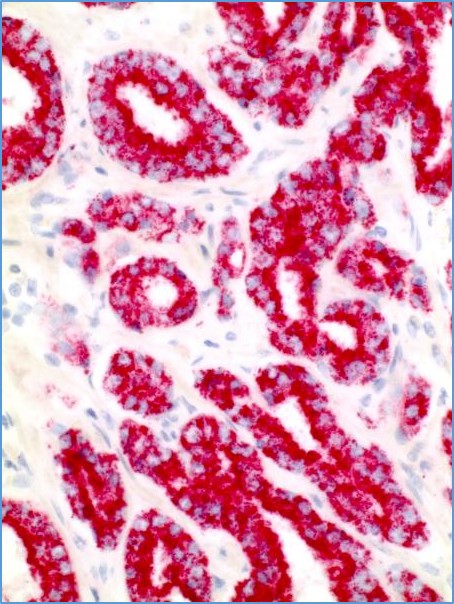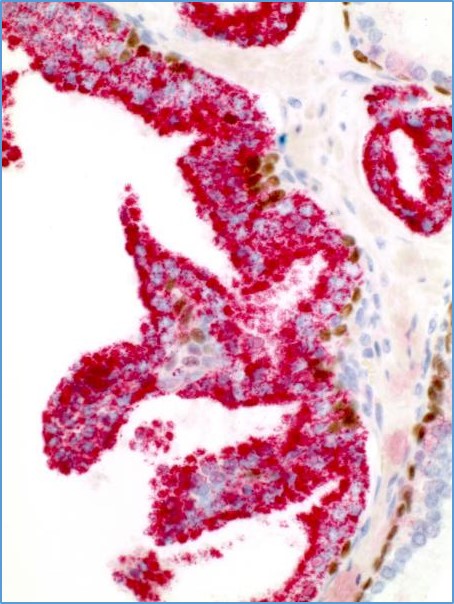Prostate cocktail by IHC
Prostate cocktail by IHC-12376 - Technical only, 12379 - Technical & interpretation
Prostate cocktail by IHC
12376 - Technical only, 12379 - Technical & interpretation
LAB12376
LAB12379
LAB12379
P504S/AMCR
P63
P63
- All IHC stains will include a positive control tissue
- Prostate cocktail can be used to discriminate prostatic adenocarcinoma from high-grade PIN, and from benign glands
- Important exceptions: in our lab, P504S does stain seminal vesicles and ejaculatory ducts. Therefore, it is important to evaluate for pigment (which would be consistent with either ejaculatory ducts or seminal vesicles) before interpreting the P504S
- P504S is not specific for prostate, and therefore should only be used on prostate tissues. Other tissues that can stain for P504S include
Prostate cancer vs HGPIN
| p504S (racemase) | p63 | |
| Cancer | + | - |
| HGPIN | + | + |
| Benign | - | - |
Tissue
Submit a formalin-fixed, paraffin embedded tissue block
Formalin-fixed, paraffin embedded (FFPE) tissue block
FFPE tissue section mounted on a charged, unstained slide
Ambient (preferred)
- Unlabeled/mislabeled block
- Insufficient tissue
- Slides broken beyond repair
AHL - Immunohistochemistry
Mo - Fr
1 - 2 days
Immunohistochemical staining and microscopic examination
If requested, an interpretive report will be provided
Antibody
Cocktail composed of antibodies to P504S/ Alpha-methlylacyl-CoA Racemase (AMACR) and P63
Specifications
- Prostate cocktail contains both P504S and P63 to simultaneously evaluate for potentially malignant prostate glands and the outer basal cell layer of glands
- P504S is a prostate cancer specific gene found in prostatic adenocarcinomas (82-100% of cases) and high-grade PIN (64%)
- P504S is usually not present (or is focal and weak) in benign prostatic tissues
- P63 is a marker of myoepithelial cells (which should be present in benign glands and in high grade PIN)
Staining pattern
Dual stain, with red and brown chromogens showing:
- Red: Strong granular cytoplasmic and apical staining for P504S, with circumferential staining of malignant glands
- Brown: nuclear staining for P63 in myoepithelial cells
88342 - 1st stain
88341 - each additional stain
88341 - each additional stain
10/31/2017
10/19/2018
01/12/2024


